

An impressive cultural, historical, and gastronomic adventure, where East and West meet.
Turkey is both a familiar and foreign world. A country that may seem far away, yet is just a few hours' flight away, where we can be amazed by an unknown and exciting world, offering a variety of historical and cultural landmarks. The country boasts a developed tourism infrastructure, allowing us to choose from a variety of experiences and services, depending on our interests and budget.
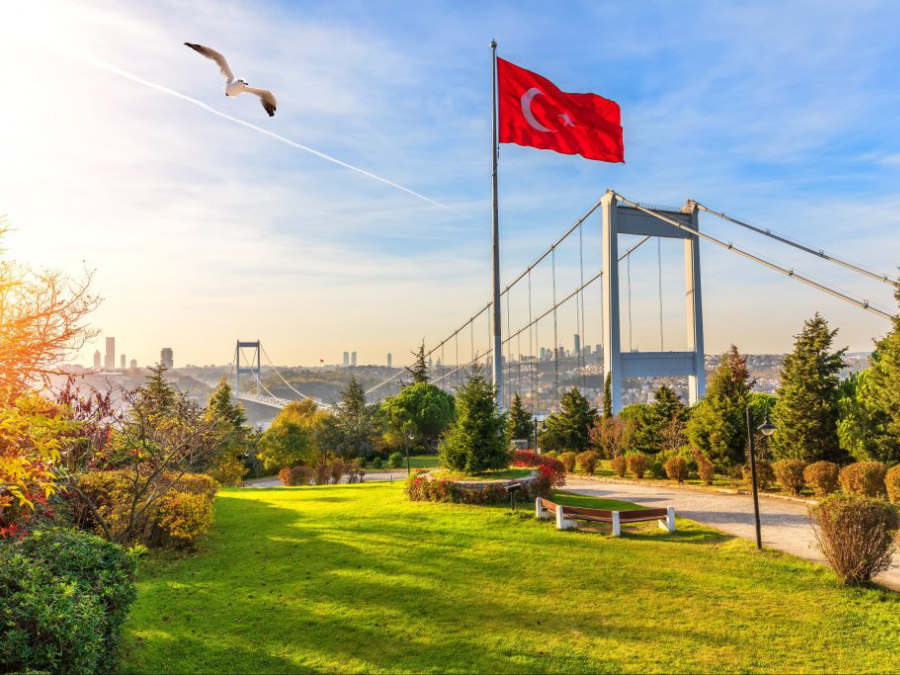
For most people, Turkey in the 1990s was synonymous with cheap gold, leather, and denim goods, while in the past two decades, it has been associated with all-inclusive beach resorts. However, for those arriving with open eyes and hearts, it offers much more: an incredibly rich cultural diversity, notable landmarks from important historical periods, breathtaking natural beauty, and culinary delights. It's time to rediscover the vibrant Eastern atmosphere of Istanbul and explore the stunning rocky landscapes of Cappadocia, along with the secrets of its underground cities!
The meeting of continents
Istanbul, with its 16 million inhabitants, is one of the most populous cities in Europe, and accordingly, it has crowded roads, nerve-wracking traffic jams, and flowing masses of people. If we're a bit more experienced and organize our visit well – or rely on a professional tour guide – we can avoid unnecessary waiting. A local guide is especially recommended if we only spend a few days in the city. The most important attractions are concentrated in a relatively small area, which we can explore on foot, or by taking the metro or tram, avoiding car traffic.
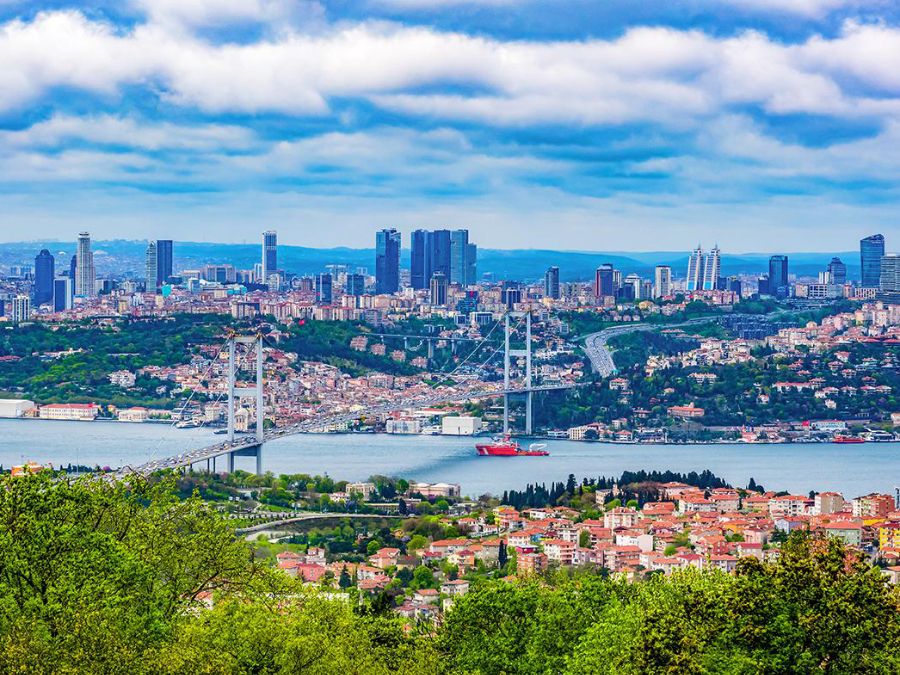
We are at the gateway of two continents, at the meeting point of Europe and Asia, and we perceive this border status in several ways. The cityscape is a blend of Eastern buildings and European-influenced architecture, and the reminders of Istanbul’s turbulent history also reflect this unique geographical location in many ways.
Although the area of the city has been inhabited for over 8,000 years, the first significant settlement was established by the Greeks. Its first golden age began in the 4th century when, under the name Constantinople, it became the capital of the Roman Empire, and later, the Eastern Roman Empire. During this period, it grew into the largest city in Europe and, due to its unique location, developed into a center of trade and culture. Due to its importance, it became a Christian religious center, and after the schism, it became the capital of Eastern Orthodoxy. In the 15th century, the Ottoman conquerors took over the city, transforming it from a Christian to a Muslim center. As the capital of the Ottoman Empire, its commercial significance, population, diplomatic importance, and trade volume continued to grow. Although it is the largest Turkish city, it is not the capital of the country. However, for travelers to Turkey, it remains the number one destination.

Due to its significance and size, it cannot be fully experienced in a short time. Even a superficial acquaintance with the sights and the atmosphere of the city requires several days.
The city of eight thousand mosques
When we think of the attractions of Istanbul, the first thing that comes to mind is its rich historical and religious heritage. The city's most famous and significant landmark, the Hagia Sophia, is an example of this.

A temple stood on this site even in ancient times. The magnificent building we see today was constructed in the 6th century by 100 master builders and 10,000 workers over the course of 5 years. Over the centuries, the marvelous temple was devastated by earthquakes, fires (about 23 natural disasters), its dome collapsed several times, but it survived iconoclasm, Crusader looting, and arson. Then, after the capture of Constantinople in 1453, it was converted into a Muslim house of worship. The interior of the temple was significantly altered at that time, but the traces of its tumultuous history can still be admired today. For example, its beautiful mosaics have been preserved, one of which depicts Empress Irene of Byzantium next to the Virgin Mary. The special life of the empress deserves a separate article, as she is revered as a saint by the Orthodox Church. Also notable are the bronze candelabras placed on either side of the mihrab (prayer niche). These candelabras have been standing there for 450 years, placed there by Suleiman the Magnificent. The sight of these relics still evokes mixed feelings even after nearly half a millennium.
At the time of the construction of the Hagia Sophia, the enormous dome was considered an incredible architectural feat, and it still inspires awe in those who view it today. The 56-meter vaulted roof structure, according to a contemporary account, appeared as though it were hanging from a golden chain from heaven. The light streaming through the forty curved windows creates the effect that the dome is weightless.
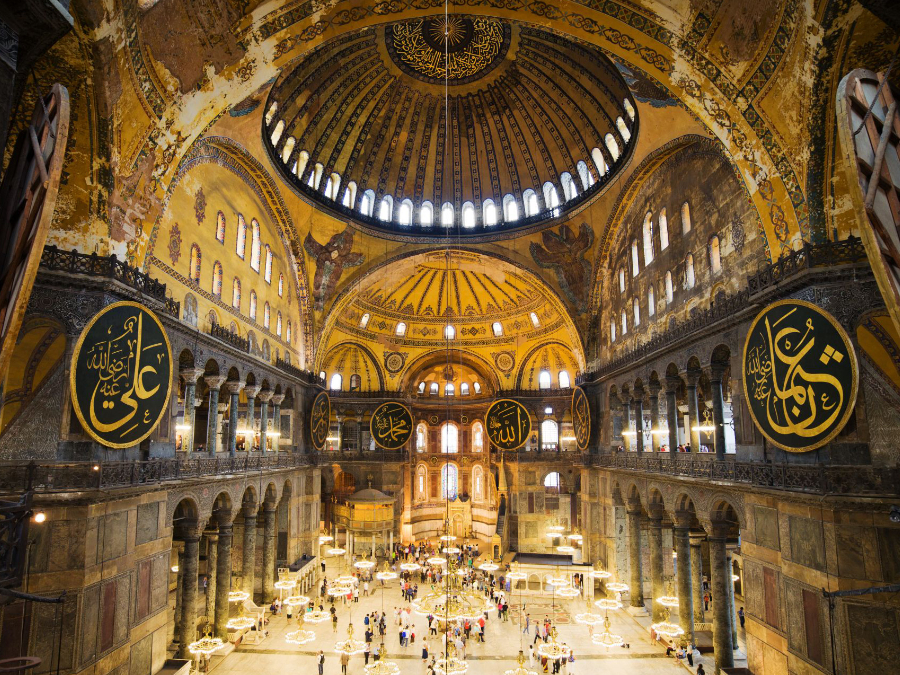
The building, aside from the dome, hides numerous other points of interest. One such feature is the "column of sweating," which absorbs and evaporates water from the reservoir beneath the building, giving rise to many local legends. On the floor, one can admire the "navel of the world," the omphalos, a special surface made of stones, where Byzantine emperors were once crowned.
The Hagia Sophia, which previously operated as a museum, was once again declared a mosque last year. However, the iconic building remains open to visitors. Its uniqueness lies in the fact that, although Islamic tradition prohibits depictions of humans in mosques, the ancient mosaics in the Hagia Sophia have fortunately been left untouched. A simple white cloth was placed over them, and from the right angle, one can still admire the Christian saints behind it. Since 1985, the Hagia Sophia has been part of the UNESCO World Heritage.
Directly across from the Hagia Sophia, you can immediately visit another mosque, which, although it is not as old as its great counterpart, is almost just as impressive and beautiful. It is named after its original builder, Sultan Ahmed I from the 17th century (Sultan Ahmed Mosque), but nowadays, it is more commonly referred to as the Blue Mosque because of its beautiful blue tiles. Grandeur, nobility, and splendor – this building showcases the greatness of Ottoman architecture, in response to the engineering marvel of the Hagia Sophia. Some believe that the mosque has six minarets (compared to the Hagia Sophia's four) to emphasize the superiority of Ottoman architecture. The six minarets have a total of 16 balconies, signifying that the mosque's builder was the sixteenth sultan in the Ottoman line.
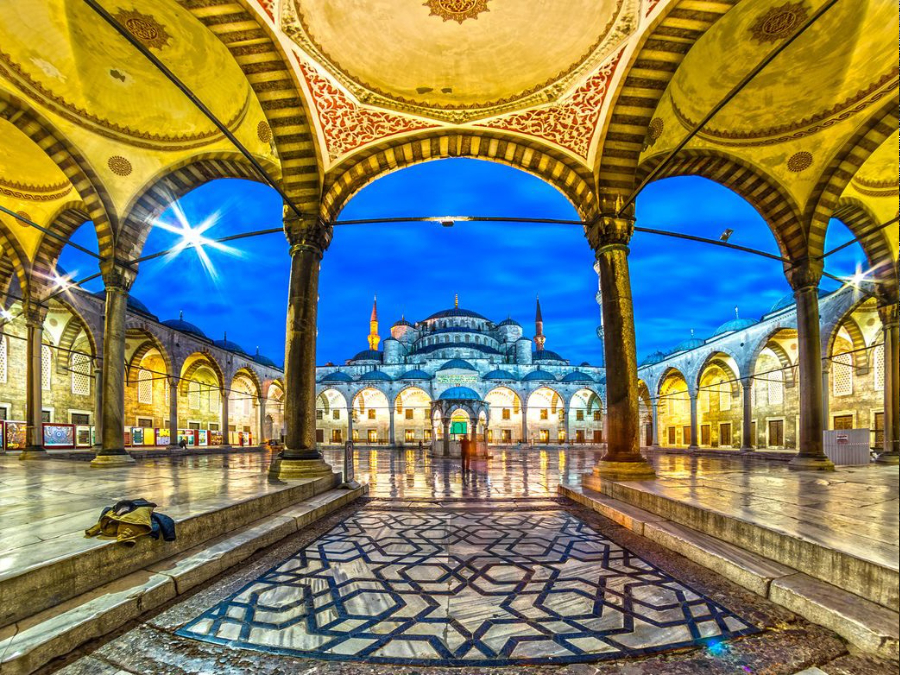
The building complex is characterized by 20,000 hand-made tiles, depicting tulips, plant motifs, and fruits. Also distinctive are the two hundred richly decorated stained-glass windows – these were brought from Venice. The mosque is surrounded by a vast garden. In the past, only the sultan could enter this area on horseback. Above the entrance, a chain hung, forcing the ruler to bow his head – as even he had to lower his head in humility before Allah.
The building still functions as a mosque today, and visitors can only enter outside of prayer times, when more than 20,000 people may gather in this uniquely beautiful place. In addition to the two most famous mosques, there are over eight thousand more mosques throughout the city, from which the call to prayer of the muezzin can be heard five times a day.
Practical tips for wandering around Istanbul:
Karaköy and the Galata Tower
In Istanbul, of course, it's not just the mosques and other religious-cultural tourist destinations that are worth visiting. The Grand Bazaar is the most famous and busiest commercial complex, where you can stroll through 4,000 shops across 60 covered streets. It's a great experience not only for shopping but also as a historical journey.

The "core" of the Grand Bazaar, the former domed warehouse building, began construction in 1455, and in fact, a market had been operating here even before the 15th century. In the world's first shopping mall, each street used to offer different trades: jewelry, carpets, handmade products, and even weapons have been available since the beginning. On busy weekends, up to 400,000 people can visit the bazaar. Don’t be surprised if some traders greet you in your native language; many have learned languages quite well. The Turks are famous traders, and smooth communication is essential for a good bargaining session.
The Spice Bazaar is also a must-visit, where various herbs and spices have been sold since the 17th century. Today, you can find fruits, freshly prepared food, flowers, and even electronics in its offerings. As you walk to the Spice Bazaar, you’ll be at the Golden Horn, facing the Galata Bridge. Here, on the European side of the Bosphorus, you find yourself in Karaköy, the oldest district of the city, which is still an important commercial hub. It's worth taking your time here to soak in the atmosphere of the area, stopping by one of the many small restaurants or cafes.
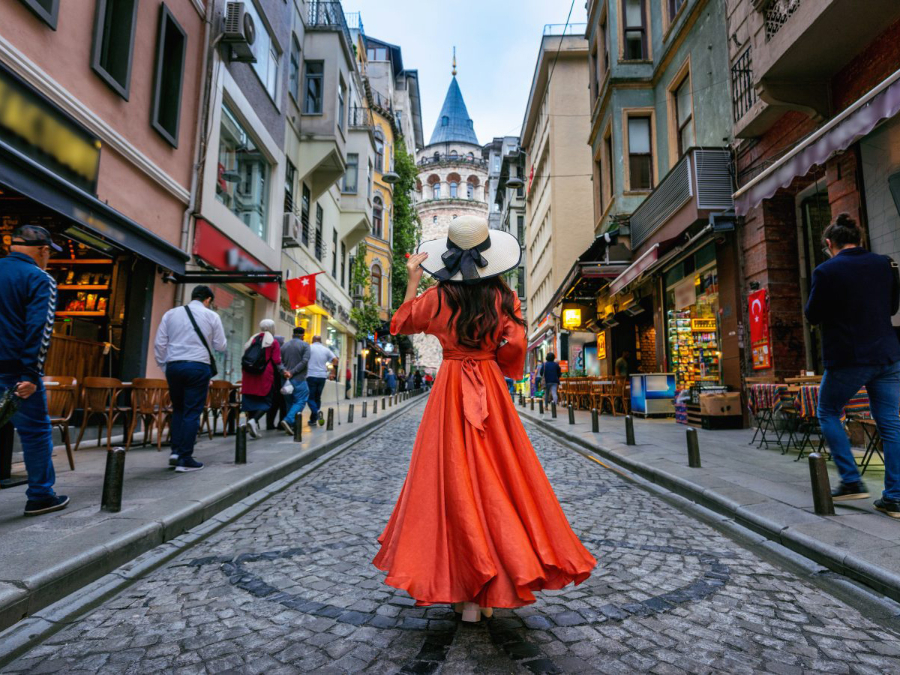
The most significant historical monument in the area is undoubtedly the Galata Tower. The original purpose of the tower was to guard the Golden Horn, and it was built for this purpose in 507. It was destroyed several times, suffering from fires and human destruction, until it was rebuilt in 1348 by the Genoese settlers in the form we see today. Since then, it has served as a fortress prison and a fire watchtower. Today, its main significance lies in offering a magnificent view of the harbor and the city that stretches across the boundary between two worlds.
Istiklal Avenue and St. Anthony of Padua Church
Not far from the Galata Tower, you can stroll through an interesting area. Istiklal Avenue is a European-style shopping street, bustling with significant traffic both day and night, with shops, cinemas, and entertainment venues. In terms of style, it's a little Europe within Istanbul, featuring characteristic 19th- and 20th-century buildings, stretching about 2 kilometers in length.

During your walk, it's worth stopping by the St. Anthony of Padua Church. Although this is a centuries-old building, the original Catholic church was not built on its current site. During the construction of the tram line, the entire building was relocated to its present location. Today, Mass is celebrated here in Turkish, as well as in Italian, English, and Polish.
While strolling, be sure not to miss tasting the seasonal offerings from street vendors, ranging from various Turkish sweets to roasted chestnuts and freshly squeezed pomegranate juice.
Off to Cappadocia!
Previously, for most European tourists, traveling to Turkey meant visiting Istanbul. Today, however, this is no longer necessarily the case, as beyond the country's small three-percent European territory, a world full of even more unique discoveries awaits: the Asian provinces. Among these, Cappadocia has become increasingly popular in recent years. It is perhaps Turkey's most unique region, now attracting nearly two million visitors annually.
The flight from Istanbul to the heart of Turkey, Kayseri Airport, takes just an hour. Another hour by bus brings us to one of the towns in Cappadocia. Why is this Central Anatolian region an unmissable experience? We’ll find out as soon as we see the sunrise from a hot air balloon, floating above the bizarre rock cones bathed in the orange glow of the morning light.

We’ll be guaranteed to be unable to fully take in the beauty of this otherworldly landscape, covered with "fairy chimneys." The area has been uniquely shaped by volcanic activity, followed by thousands of years of work from the wind and water, creating forms that resemble bastions and sculptures.
In many places, homes were carved into the sculptable tuff formations, with the first ones being created more than four thousand years ago. Later, the Christians who settled here—fleeing persecution—not only created rock dwellings but also built entire underground cities, decorating the natural walls with beautiful frescoes.
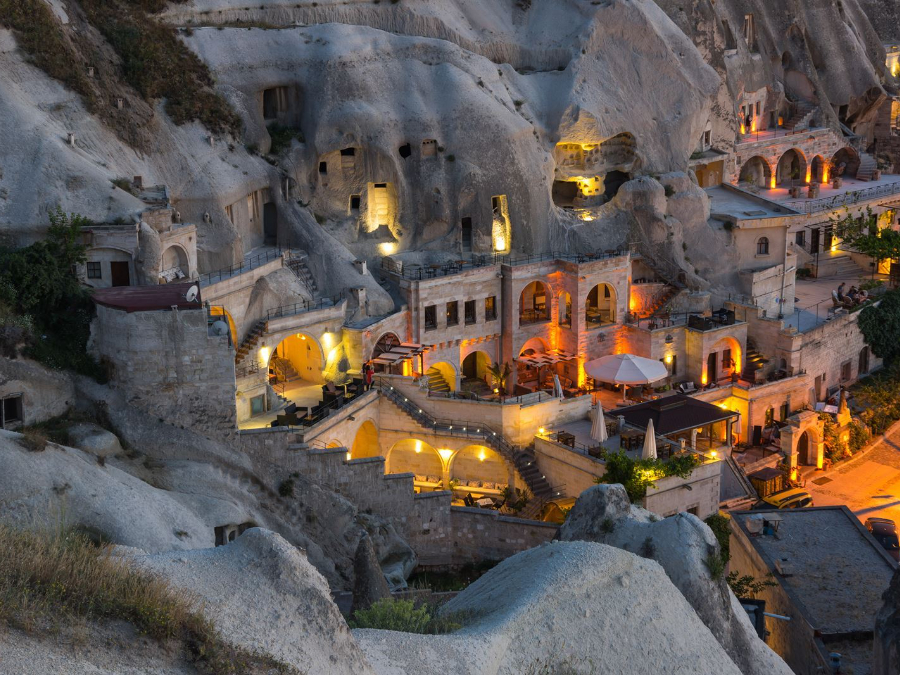
After the Ottoman conquest, the Christians disappeared from the region, but the rock dwellings and churches mostly remained intact. Today, these are popular tourist attractions, and many of the rock structures even operate as hotels.
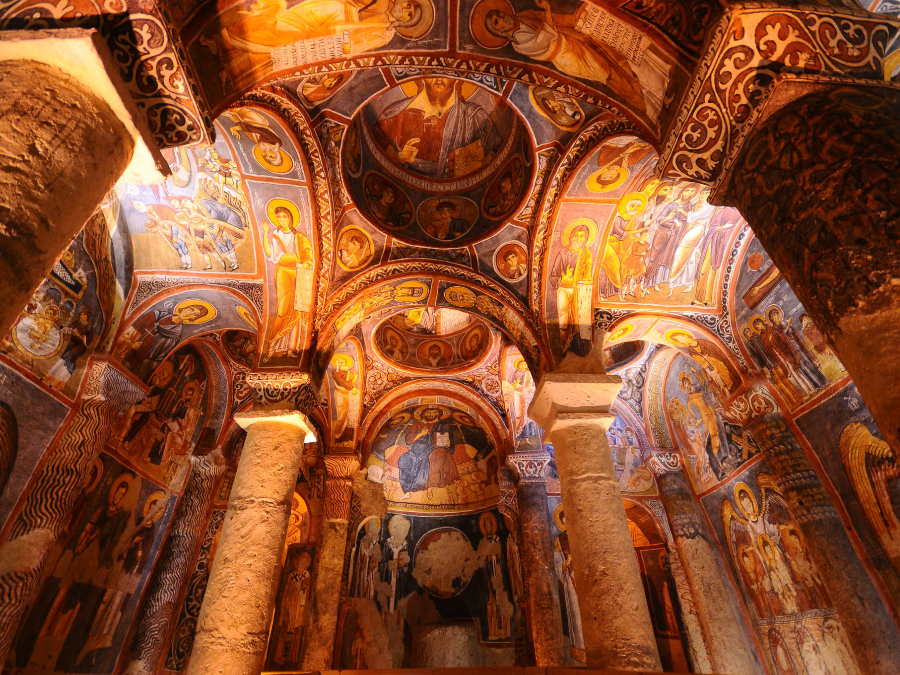
Cappadocia is easily accessible by car, but it's worth exploring the landscape on foot or horseback along the designated hiking trails. You'll find excellent restaurants, cafes, and a wide range of hotel options in this scenic region, where a hot air balloon ride or a visit to a traditional Turkish bath (hammam) is an unmissable experience. Exploring the moon-like landscape of the Göreme Valley, wandering through the underground cities of Kaymakli and Derinkuyu, visiting the fortress-like town of Uchisar, or taking in the breathtaking views of the towering cliffs surrounding Ihlara Valley promise unforgettable adventures.
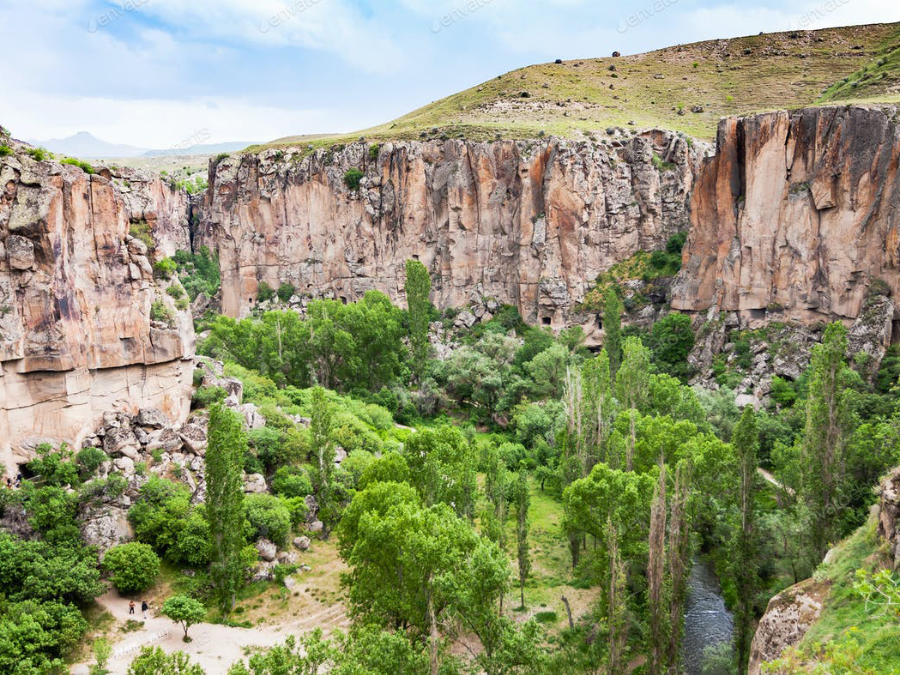
Here are some practical tips for your trip to Turkey: